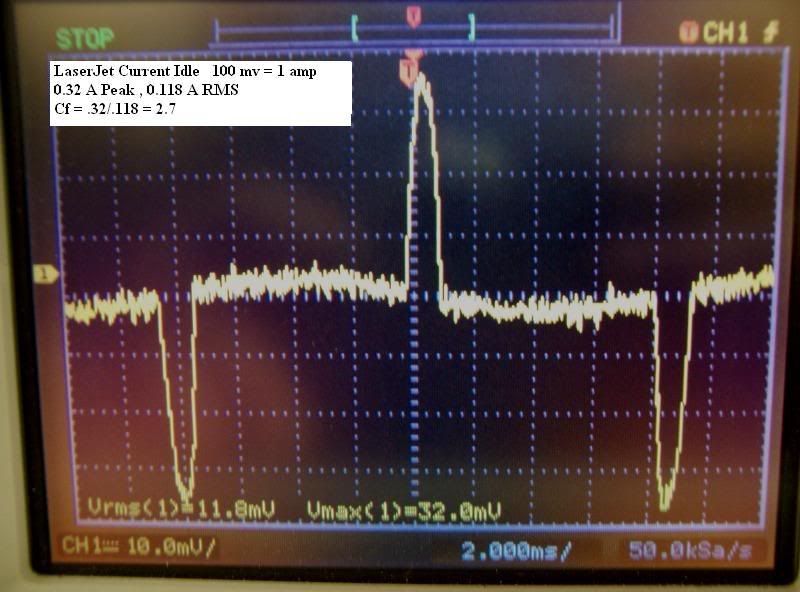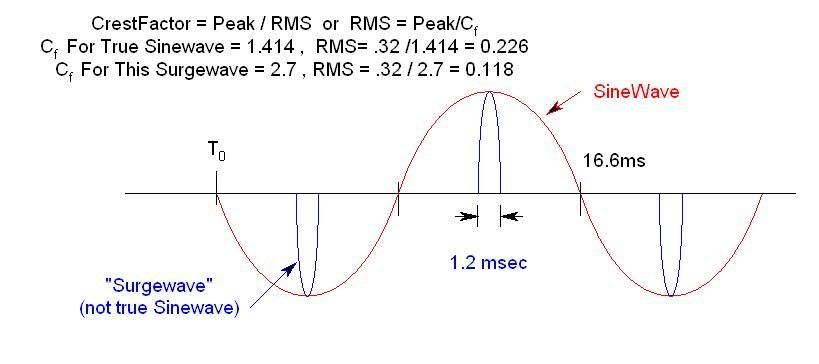Distortion
Distortion
You can look at a branch with several computers, look at IT equipment, look at almost anything utilizing SMPS's, you can see it. YOU can see it with an averaging clamp compared to an RMS clamp.
Look, posts #47 and #50 were a test on my part. I wanted to see just how bad I got hammered. Thought a couple here would grill me, and leave me for the buzzards. That's what I was betting.
I sometimes like being wrong.
Okay, you asked for it, now don't complain about it for being too long. The Ideal 61-165? What does it do for me? I didn't look to see what the post # was that started my interuption, but start there. How many times have loose wires been the root of the problem over a long period of time or with a heavy load?
Someone made a jab about not using a better brand than IDEAL. I use and buy only one particular brand of testers. I have always frowned on IDEAL testers, to me they always looked cheap, almost like a child's toy. Rugged never crossed my mind with that company and their testers. The only thing I carry that is not Fluke is #1.Phase Sequencer, #2.IR gun, #3. Mag-Probe. I was very skeptical on spending more money on my disease. After talking with a friend who bought one, and hunting for a good deal, I broke down and bought one.
So, reasons in a long nutshell?,.........Time, product features, ease and comfort. Did I fit speed in there?
LOOP IMPEDANCE!!!!!! IEEE states EGC to have less than .25 ohms to be safe. Lose a neutral? Here, plug this in. Wiring configuration, big deal right? It can determine N to PE, excuse me, grounded to grounding bonds 15-20' upstream. Instant Vdrop, 12, 15, 20A loads. Grounded to grounding V, peak, available short circuit current. Compare grounding to grounded V's on three ph and see imbalance or HD on a joint neutral. Ease of use, and design.
In the word of it's manual, they word it better than I can without this post being three times the size it is right know. All of those features plus more, all in a comfortable tester. Scroll down, down, down, until you find the feature you need. The only thing the tester askes of you is that you give it a minimum of 20 seconds from pull and plug to the next device to avoid overheating.
It's just a new type of testing for me I have never done before. Give me a circuit with a loose connection. You take the megger, that's if you can close that branch, and give me the SureTest. I'm betting I am out in the truck with your lunch ready before you get there. You are pulling boxes, disconnecting devices, removing the branch, blah, blah, blah. I'm plugging, graphing and going. You took the megger and tool pouch on your trial, I took the 61-165 and a Twix bar. When I find the fault, then I'll go grab the tool bag. Lighting circuit? Grab a 61-183 adapter, clip, clip, clip. Downstream to upstream all day long. With possible loose connections causing burden on anything, I'll take the 61-165, you take anything you want, but my lunch is getting cold:wink:



